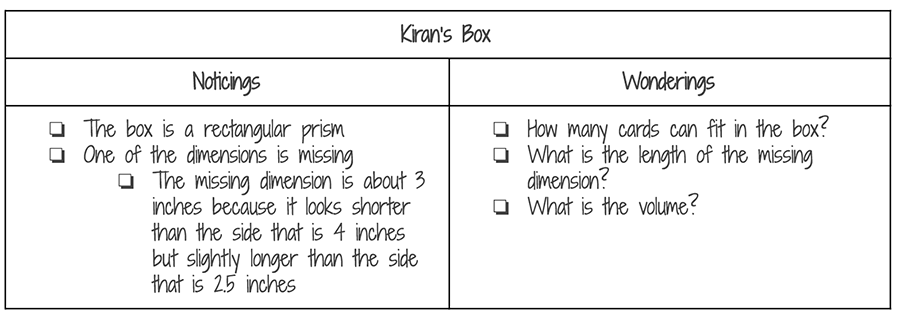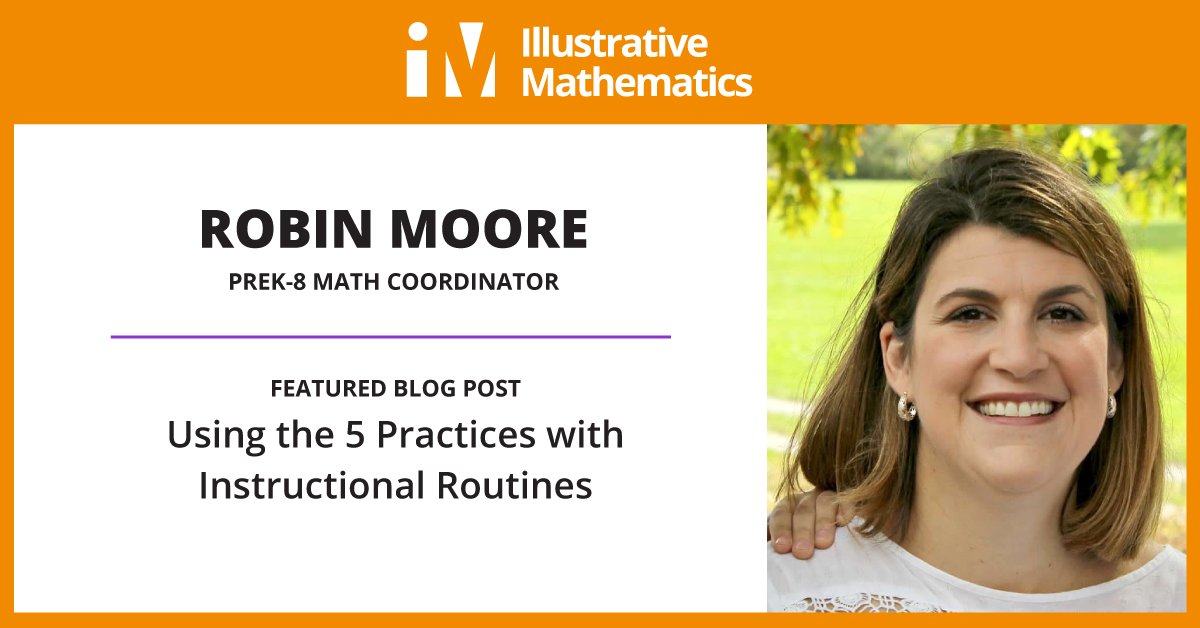By Robin Moore
As a coach, how can I help teachers structure their lesson-planning in order for students to unpack their mathematical understandings?
This question is always at the forefront of my mind as I reflect on my work as an instructional coach. Most times, I walk into classroom after classroom witnessing teachers working harder than the students. To be clear, the students are all on task and working on the mathematical concepts presented to them with little to no behavior problems. The biggest challenge for teachers is attempting to differentiate for the range of learners in the classroom. To address this challenge, teachers have implemented a math workshop format. In this format, teachers communicate the learning objectives for the lesson and present a scaffolded mini-lesson where they gradually lead students through problem-based activities to ensure each student’s success. While the activities are problem-based, something authentic is missing and many would say that the work does not appear rigorous for all students. From a coaching lens, I wonder when and where learning is happening and who is unpacking it.
In order to transform classrooms to truly being centered around student thinking, shifts need to take place within the lesson structure to encourage student discourse and connections. This may sound crazy, but teachers need to not worry so much about leading the students through the mathematics, and instead begin to shift their efforts into planning for how students could could make meaning themselves. Rather than students engaging in activities around a big idea that the teacher unveils for them, the activities need to support the students in creating meaning of new concepts as they unpack their own understandings. Instead of the end of the lesson being a show-and-tell of student work, the teacher purposefully chooses students to communicate their learning while asking them to make connections to draw out the big idea of the lesson. This brings me to a question: How can I help implement such big shifts in instructional practice?
Instead of the end of the lesson being a show-and-tell of student work, the teacher purposefully chooses students to communicate their learning while asking them to make connections to draw out the big idea of the lesson.
As a result of my training with Illustrative Mathematics, I have finally provided all of my teachers in grades K–8 with professional development on the 5 Practices framework. This is something I have wanted to do for years, since first reading Stein and Smith’s book, 5 Practices for Orchestrating Productive Mathematics Discussions. But I did not have the vision nor the opportunity to roll it out. As I worked with teachers, what I found to be the most successful entry point to begin implementation of the 5 Practices structure was planning for instructional routines. Instructional routines take about ten minutes and apply a consistent structure that allows students to quickly engage with the content. Not only can the teacher complete the entire 5 Practices sequence within an instructional routine, but a carefully selected routine can be the beginning of an overall transformation to a truly authentic problem-based lesson, centered around student thinking.
The routine I began using the 5 Practices planning structure with was a Notice and Wonder. The Notice and Wonder routine is a great starting point for teachers as it is a great lesson launcher for all students across all grade levels. It is highly engaging, provides an entry point for a range of learners, and activates students’ prior knowledge. Below is a sample of a Notice and Wonder routine I planned and taught in a 6th grade classroom, taken from a Grade 6 lesson from the Illustrative Mathematics 6–8 Math curriculum.
Kiran is wrapping this box of sports cards as a present for a friend.

What do you notice? What do you wonder?
Copyright © 2017 Open Up Resources.
While this image appears to be a simple launch for surface area of prisms and pyramids, the open-ended prompt gives teachers the opportunity to use the 5 Practices structure to purposefully craft the activity, so students are at the center of their learning right from the start.
Based on the lesson plan, I knew the learning goal was for students to be able to calculate the surface area of prisms and pyramids and draw their nets. For this to happen during the remainder of the lesson, I knew I needed to elicit particular noticings and wonderings from my students during the routine—all of which I was certain would arise. I anticipated the responses students would give, decided how I would monitor, chose which responses I would want to share, and the determined the sequence of their sharing. This planning is critical due to how sacred instructional time is. I needed to keep a laser-like focus on my learning intentions and keep my instructional moves precise. As students shared things they noticed and wondered with a partner, I monitored their discussions for students to share the responses I needed to set the stage for the day’s learning. I had asked certain students to share their responses and called them in a planned sequence as I recorded them on a t-chart below.

After they finished, I was still missing a critical wondering in my planning that had not yet surfaced. I read aloud to the students the very first sentence of the prompt, “Kiran is wrapping this box…”, and followed it with my own think aloud, “I wonder what Kiran might want to know if he is going to be wrapping this box.” Immediately, hands shot up with students wanting to add finding the surface area to our list of wonderings. I had students turn and talk about how they would find the surface area of Kiran’s box, again listening for certain strategies that I had anticipated. I chose two different groups to share how they would go about finding the surface area of Kiran’s box and then moved right into the next activity. The students went right to work on the task with all of the ideas and prior knowledge elicited during the Notice and Wonder routine.
The big takeaway in modeling this lesson with the classroom teacher came from the realization of how purposefully planning for an instructional routine can support a lesson as a whole. The students were about 3/4 of the way through creating their nets and finding the surface area of their polyhedron when the teacher asked me when the mini-lesson was. She was confused because I had not done any of the so-called work. I explained that all of the ideas that would be in a mini-lesson were embedded in the Notice and Wonder routine. The teacher had not realized that what appeared to be such a small two-minute move of making sure students wondered about the surface area of Kiran’s box, followed by a couple of minutes for students to strategize how they could find its surface area, was their entry point into their activity. Like a group of athletes stretching before their workout, their minds were ready to take on a challenge.
The 5 Practices structure has strengthened the teacher’s capacity to be more thoughtful and purposeful in their planning.
As teachers, we relish our work when our students have those “aha” moments. As an instructional coach, I am able reap the benefits of not only seeing the “aha” moments for students, but also for teachers. The 5 Practices structure has strengthened the teacher’s capacity to be more thoughtful and purposeful in their planning. Although they continue to work on implementing this structure throughout entire lessons, I have found that an instructional routine such as Notice and Wonder has proven to be a successful starting point. By first applying the 5 Practices structure to a bite-size chunk of the lesson, teachers have more of a buy-in to try something new. Once the teacher has successfully established the instructional routine using the 5 Practices structure, the lesson will have a natural momentum that will make it easier for the teacher to continue to apply the structure throughout. I am seeing teachers planning more effectively and turning the learning over to the students while they take on the role of facilitator. When teachers use the 5 Practices planning structure, you can see a positive difference when you walk into their classrooms.
Next Steps
- If you are looking for an example of a lesson plan that has a Notice and Wonder instructional routine written using the 5 Practices, check out Grade 6, Unit 1, Lesson 15, Warm-Up 15.1: Notice and Wonder: Wrapping Paper in Illustrative Mathematics 6–8 Math Curriculum.
- If you are coaching teachers on implementing the 5 Practices into their classrooms, I would love to hear about your experiences.
- Read this article,”Orchestrating Discussions”, and let me know what resonated with you.
- To read more examples of how I used the 5 practices structure as a district coach, click here.
- Click here to learn more about professional development of the 5 Practices for your classroom or school.
